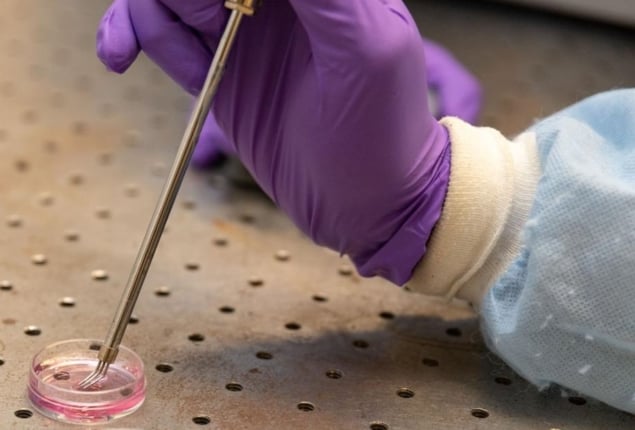Nanoparticle-mediated microdynamic therapy selectively kills cancer cells
08 Jul 2019
An international team of researchers has demonstrated how titanium dioxide (TiO2) nanoparticles stimulated by microwaves can be used to selectively kill cancer cells – paving the way for more targeted and less harmful treatment. So, what are the key benefits of microwave activation over previous methods? And what are the next steps for the research team?
Nanoparticles take control
Microwave ablation has been used for cancer treatment for some time – generally involving the simple heating of cancer cells to a certain temperature, typically around 45oC, to induce tissue necrosis in solid tumours. However, existing approaches are limited by the fact that they are not easy to control; it is difficult to focus heat solely on tumour cells, leading to the common problem of overheating and damage to surrounding normal tissue.
In an effort to solve this problem, researchers based at Guangdong Academy of Medical Sciences, Beihang University and the General Hospital of Guangzhou Military Command of PLA in China, as well as at the University of Texas at Arlington, have investigated the effect of inserting nanoparticles – including TiO2, copper cysteamine and graphitic-phase carbon nitride quantum dots – into tumours (Nanomedicine: NBM 10.1016/j.nano.2019.02.016).
As co-author Wei Chen explains, a key characteristic of these nanoparticles is the fact that they can absorb microwave energy more effectively, making it easier to heat up tumour cells locally while avoiding or reducing the heating of surrounding normal tissue. Applying microwaves to cells for nanoparticle-mediated microdynamic therapy. (Courtesy: Wei Chen)
Applying microwaves to cells for nanoparticle-mediated microdynamic therapy. (Courtesy: Wei Chen)
 Applying microwaves to cells for nanoparticle-mediated microdynamic therapy. (Courtesy: Wei Chen)
Applying microwaves to cells for nanoparticle-mediated microdynamic therapy. (Courtesy: Wei Chen)
“Interestingly, we found that inserting nanoparticles into tumours didn’t increase the heating or temperature [when exposed to microwaves] as compared with water, but the tumour cell killing was more effective,” says Chen. “In our observations, we found that reactive oxygen species [ROS] like singlet oxygen or hydroxyl radicals were produced from the nanoparticles following interaction with microwaves. The heating plus the ROS kills the tumour cells in a more effective way.”
Powerful Combination
According to Chen, a key benefit of using microwave energy is the fact that, compared with X-rays, microwaves are much safer and cheaper. Moreover, when compared with laser light, microwaves can penetrate far deeper into tissue. Whereas light energy cannot penetrate more than 1 cm, microwave energy can reach depths of up to 7 cm. The interaction of microwave with materials or tissues has two effects – a heating effect and a non-heating effect. The heating effect is very easy to understand – and entails the simple conversion of microwave energy to heat, in the same way that it is used for cooking.
The non-heating effect is not so straightforward but, in basic terms, entails the use of energy to cause chemical reactions and, in the case of TiO2 nanoparticles, to produce the ROS that Chen describes as “lethal” to cancer cells.
“Both the heating and non-heating effects are fully used for cancer destruction – this combination is powerful because tumour cells are more vulnerable at high temperature, rendering them more easily killed by ROS or oxidative therapy,” he says. “Here, we defined microwave-induced oxidative therapy as microdynamic therapy.”
Moving forward, Chen reveals that the new microdynamic therapy method has many applications and, in addition to cancer treatment, can also be used to kill viruses, bacteria, fungi and infectious diseases.
“I think the use of microwaves alongside nanoparticles is a powerful combination because it not only generates heat but also ROS,” Chen explains. “However, although ROS is a lethal weapon to kill bad guys like cancer cells, viruses and bacteria, they can also hurt good guys like healthy tissue or cells, meaning that caution is needed and professional training is required. As nanoparticles are needed, regulations and approval from the FDA [US Food and Drug Administration] are also mandatory.”
The next step for the research team will be to carry out more experiments and studies and work on extending use of the approach to clinical settings. “Our goal is to license the technology for clinical trial and product development for practical applications in fighting cancer and other diseases,” Chen adds.
from physicsworld.com 11/7/2019

Δεν υπάρχουν σχόλια:
Δημοσίευση σχολίου